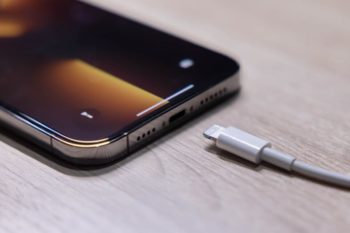Telehealth: 10 ways 5G could revolutionize health care
Telehealth, data management, automation of processes, coverage in remote locations, and innovation will all benefit from 5G

Telehealth
Switching to 5G will make it possible to reach more people more effectively and provide uninterrupted coverage to vulnerable sectors of the population that require at-home care. Thanks to 5G, older adults, for example, will be able to receive personalized care remotely and safely, without having to travel long distances to be diagnosed with some ailment or waiting several hours in an office. In addition, with 5G, it will not matter how far a person lives from a medical center, since the connection speed will work for both patients and doctors.
Patient follow-up

In addition to virtual consultations, medical centers and patients will have a wide variety of devices to monitor vital signs, heart rate, body temperature, and even perform remote electrocardiograms in real time. This represents a great advance that will improve people’s quality of life and will allow them to save costs on medical care in hospitals; In addition, the collection of data will potentially help create research programs to improve all processes of remote medical care.
Support technologies in surgeries
Undoubtedly, 5G is being hailed as a technological advance that will have a positive impact in the field of health care. It will an uninterrupted connection, in real time, with specialists who may not be able to travel to hospitals to perform surgeries. This connection also means a better resolution for images, video and sound to allow a team of doctors to attend to attend high-risk surgeries without the need for them to be inside the operating room.
Logistics

The implementation of 5G in ambulances and hospitals represents the opportunity to provide more efficient care to patients and to effectively allocate resources. This tool will provide the necessary information to create better logistics that cater to the needs of the patients. The support of 5G could save more lives, by avoiding sending patients to hospitals with full beds or that do not have the necessary equipment to treat an illness or emergency in cases of serious accidents.
Greater access for rural areas
With the use of 5G, more people will be able to access early care that can save their lives or avoid further complications in an emergency, especially if they are in remote areas. By having this system, it is expected, in the long term, that all communication systems between ambulances, hospitals and traffic signals will be synchronized to create a safer and faster journey.
Creation of virtual health assistants

In a short time, there will be a greater proliferation of virtual health assistants, adapted to the different sectors of society with special programs to verify that all treatments are administered as indicated by the doctor. In the case of patients recovering from operations, and even those with cognitive or physical disabilities, virtual assistants will help with things like medication dosage.
Remote training
An important aspect of telehealth is training providers and patients in how to use it. Thus, the transmission of training videos, tutorials and certifications may take place simultaneously or in phases according to the requirements of each medical center.
Video conferences

The low latency of 5G can allow real-time decision making, especially in emergencies, as it will eliminate the risk of interruptions and increase the quality of communication between both parties. With 5G broadband, materials can be loaded and unloaded more easily and quickly to provide timely care, whether within ambulances, hospitals, and homes.
Data management
It is imperative to define the decisions to be made to ensure that data management is appropriate and beneficial for the future of remote medical care, optimizing the resources available to the maximum. Thanks to large-scale data collection, companies that provide health care will be able to detect their deficiencies, evaluate their performance and implement improvements and innovations for the benefit of patients, doctors and staff.
Augmented reality

People with disabilities, children and older adults will benefit from the implementation of 5G, thanks to access to virtual reality or augmented reality programs that serve various purposes. In some cases, these types of programs will have the mission of acting as virtual assistants, but also as guides for monitoring therapies and even as distractions for stress or anxiety relief.
The post 10 ways 5G could revolutionize healthcare appeared first on Mundo Now
 Related post
Related post





